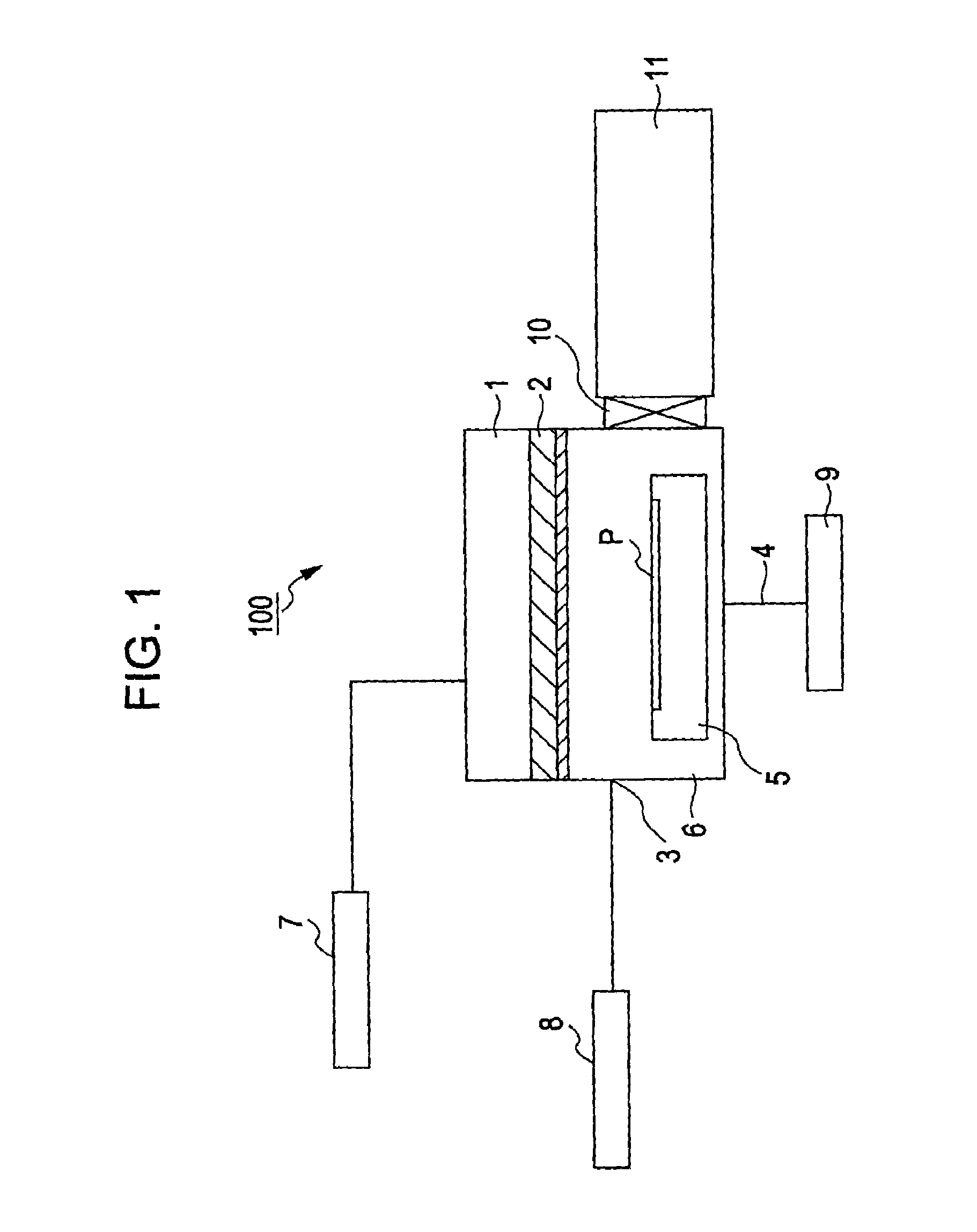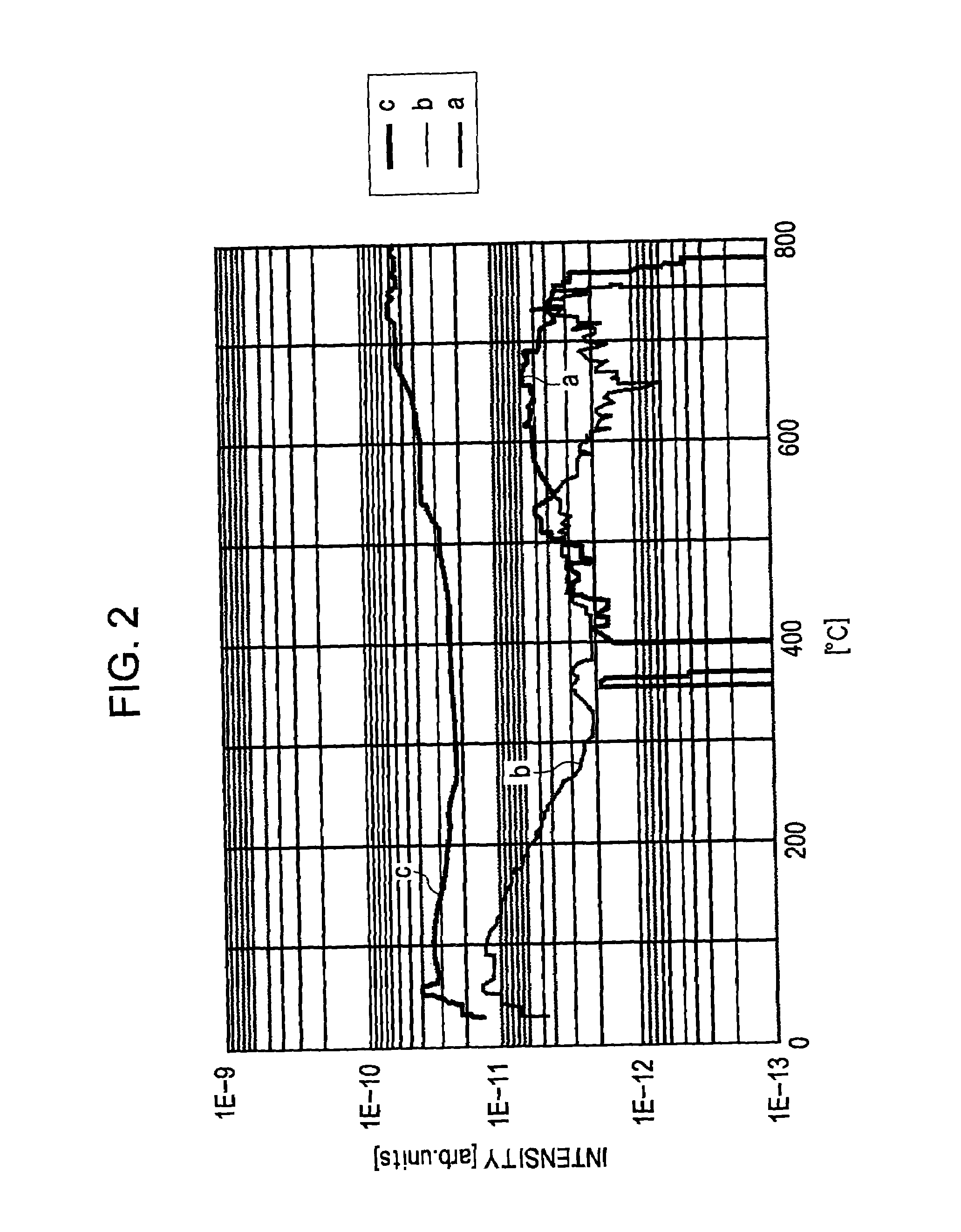Surface treatment method, manufacturing method of semiconductor device, and manufacturing method of capacitive element
a manufacturing method and semiconductor technology, applied in semiconductor devices, printing, electrical equipment, etc., can solve the problems of affecting the adverse influence of the native oxide film thus formed on the control of the quality and uniformity of the film to be grown, and the adhesion of the tin film is degraded, so as to achieve the effect of suppressing the change in the properties of the object, reducing the risk of electrical shock, and reducing the risk o
- Summary
- Abstract
- Description
- Claims
- Application Information
AI Technical Summary
Benefits of technology
Problems solved by technology
Method used
Image
Examples
experimental example 1
[0063]First, a sample was formed as described below. On a surface of a monocrystalline silicon substrate, an amorphous silicon oxide film having a thickness of 100 nm was formed by thermal oxidation, and on the film thus formed, an amorphous silicon (hereinafter referred to as “a-Si”) film having a thickness of 400 nm was formed by a plasma CVD method. Subsequently, on the surface of the a-Si film thus formed, an amorphous silicon oxide having a thickness of 50 nm was formed by a plasma CVD method.
[0064]For the sample thus obtained, surface treatment was performed using the treatment apparatus 100 shown in FIG. 1.
[0065]While the temperature of the heater stage 5 receiving the sample was heated to 280° C., and deuterium (D2) was supplied as a process gas, the pressure inside the process chamber 6 was controlled to 66.7 Pa using exhaust means 9.
[0066]While the conditions described above were maintained, a microwave having a wavelength of 2.45 GHz was generated at an output of 3 kW by ...
experimental example 2
[0095]As the object, two types of monocrystal silicon wafers were prepared from wafers each provided with a native oxide film. That is, one type of wafer was prepared from a wafer provided with a native oxide film by surface treatment with deuterium plasma, followed by nitridation with nitrogen plasma. For preparing the other type of wafer, a wafer provided with a native oxide film was nitrided with nitrogen plasma without performing hydrogen plasma treatment and deuterium plasma treatment. As the plasma nitridation conditions, the microwave electrical power was 3 kW, the pressure was 2×10−2 Pa, and the wafer temperature was 280° C.
[0096]Those two types of samples were analyzed by secondary ion mass spectrometry (SIMS), and the results are shown in FIGS. 3 and 4.
[0097]According to a sample C2 which was not surface-treated with deuterium plasma, nitridation was performed while moisture was adsorbed on the native oxide film formed on the wafer surface as shown in FIG. 3. During plasma...
embodiment 1
[0101]Embodiment 1 of the present invention relates to a method for manufacturing a semiconductor device, the method comprising the steps of performing surface treatment of surfaces of active regions made of monocrystalline silicon by hydrogen plasma, then performing nitridation treatment by nitrogen plasma, and subsequently forming a dielectric film having a high dielectric constant.
[0102]On a surface of a p-type monocrystalline silicon wafer 21 used as an object, an element isolation region 22 and an active region surrounded thereby are formed by selective oxidation or shallow trench isolation.
[0103]Next, after a native oxide film on the active region surface is removed by hydrogen fluoride anhydride, washing is performed for several seconds with purified water, so that a monocrystalline silicon surface of the active region is terminated with fluorine.
[0104]Subsequently, the object is transferred into the apparatus shown in FIG. 1, and plasma is generated by introducing a deuteriu...
PUM
 Login to View More
Login to View More Abstract
Description
Claims
Application Information
 Login to View More
Login to View More - R&D
- Intellectual Property
- Life Sciences
- Materials
- Tech Scout
- Unparalleled Data Quality
- Higher Quality Content
- 60% Fewer Hallucinations
Browse by: Latest US Patents, China's latest patents, Technical Efficacy Thesaurus, Application Domain, Technology Topic, Popular Technical Reports.
© 2025 PatSnap. All rights reserved.Legal|Privacy policy|Modern Slavery Act Transparency Statement|Sitemap|About US| Contact US: help@patsnap.com



